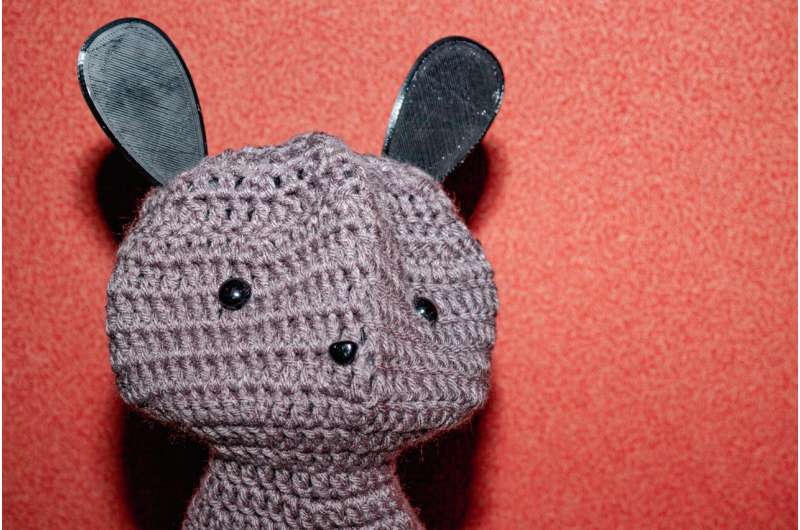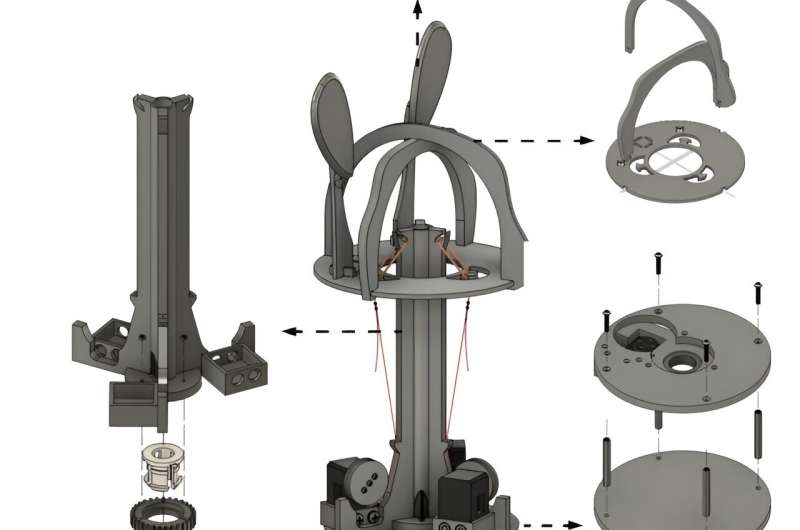This article has been reviewed according to Science X's editorial process and policies. Editors have highlighted the following attributes while ensuring the content's credibility:
fact-checked
preprint
trusted source
proofread
How to build your own robot friend: Making AI education more accessible

From smart virtual assistants and self-driving cars to digital health and fraud prevention systems, AI technology is transforming almost every aspect of our daily lives—and education is no different. For all its promise, the rise of AI, like any new technology, raises some pressing ethical and equity questions.
How can we ensure that such a powerful tool can be accessed by all students regardless of background?
Inspired by this call to action, USC researchers have created a low-cost, accessible learning kit to help college and high school students build their own "robot friend." Students can personalize the robot's "body," program the robot to mimic their head posture, and learn about AI ethics and fairness in an engaging, accessible way.
"We're proposing this open-source model to not only improve education in AI for all students but also to make human-interaction research more affordable for labs and research institutions," said Shi. "Ultimately, we want to increase access to human-centered AI education for college students and create a pathway to more accessible research."
To reduce costs and development time for learners, the team customized and simplified Blossom, a small, open-source robot originally developed by Hoffman at Cornell University. Blossom is a common fixture in USC's Interaction Lab—Shi previously used the robot to design better AI voices for mindfulness exercises, while O'Connell programmed it to act as a "study buddy" for students with ADHD symptoms.
Last year, the duo began to devise ways to use the robot for educational purposes and set to work creating a low-cost, customizable and "human-focused" module that could mirror some of the ways that students will interact with technology in their everyday lives.
The system is outlined in a new study, titled "Build Your Own Robot Friend: An Open-Source Learning Module for Accessible and Engaging AI Education," which appears on the pre-print server arXiv and was presented at the AAAI Conference on Artificial Intelligence, education symposium track.
"We believe it is important for students to learn about fairness and ethics in AI in the same way that we learned about math and physics in K-12," said co-lead author Zhonghao Shi, a doctoral student in computer science who conducts his research in the USC Interaction Lab led by Professor Maja Matarić.
"We may not use these subjects every day, but having a basic understanding of these concepts helps us do better work and be mindful of new technologies."
Hands-on experience
The three-part open-source learning module provides students with hands-on experience and introductory instruction about various aspects of AI, including robotics, machine learning, software engineering, and mechanical engineering. It helps to address a gap in the market for AI education, said Shi and O'Connell.

Currently, pre-built robots, such as the NAO, are unaffordable for schools with limited resources, while educational robot kits, such as LEGO Mindstorms, though affordable, do not adapt to students at different levels.
To make the robot more affordable, they developed strategies to subsidize its cost. In the version of Blossom presented in the study, the materials are created using 3D printers, instead of more costly laser printing. Currently, one of the team's customizable robots costs around $250 to make. In comparison, a NAO robot runs at around $15,000.
O'Connell, who learned to crochet during the pandemic, designed five new Blossom exteriors and created detailed, easy-to-follow patterns and tutorials for each version, including a baby onesie, knitted and crocheted options, which are all low-cost and customizable.
After constructing their robot friend, students are encouraged to further customize Blossom with, for instance, mechanical eyebrows, color-changing lights, or even an expressive face screen. For O'Connell, creativity has been a crucial part of her own engineering journey.
"Crafting and engineering require similar strengths like counting, planning, and spatial reasoning," said O'Connell. "By incorporating crafting into this project, we hope to draw in creative students who might not have considered how their skills align with robotics and engineering."
Understanding ethics and fairness
The system was piloted in a two-day workshop in May 2023 with 15 undergraduate college students from a local minority-serving institution. Four teams of students constructed Blossom robots following the learning module assembly guide with blank knitted exterior to personalize with accessories. On the second day, the students used pre-trained head pose tracking and gesture recognition models to detect and mimic nodding behaviors from the user.
From post-workshop surveys, they found that 92% of the participants believed that the workshop helped them learn more about the topics covered and all the participants believed that the workshop encouraged them to study more about robotics and AI in the future.
"Equipping users with AI literacy, including an understanding of AI ethics and fairness, is crucial to avoid unintended discrimination against marginalized groups," said Shi.
In continued work, the team plans to further evaluate and improve the module for high school students and K-12 students. Ultimately, the researchers hope to expand access for students at different educational levels.
"We're excited to share more about our project with people from around the world," Shi said. "We want to make sure that people from different kinds of socioeconomic backgrounds have the opportunity to gain an education on AI and participate in the process of improving AI for future use."
More information: Zhonghao Shi et al, Build Your Own Robot Friend: An Open-Source Learning Module for Accessible and Engaging AI Education, arXiv (2024). DOI: 10.48550/arxiv.2402.01647
Journal information: arXiv
Provided by University of Southern California





















